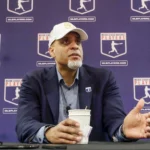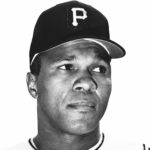A new report released last week does not bode well for onetime San Diego Padres’ players Dick Sharon and Rick Sawyer.
According to the World Economic Forum (WEF), on average, men in the United States can outlive their personal savings by eight years. The WEF report goes on to conclude that pension and government welfare systems and retirement savings globally have not kept pace with longer life expectancies.
Now, why does that matter? Because the life expectancies of baseball players have actually been found to be higher than that of the general population. Compared to the average 20-year-old U.S. male, an MLB player can expect to live almost five additional years of life, according to the results of a research study published in a 2008 edition of Social Sciences Quarterly. The study found that career length is inversely associated with the risk of death, likely because those who played our national pastime are more apt to be physically fit.
Sharon, who earned $16,000 when he played for the Padres in 1975, turned 69 on Tax Day (April 15). Sawyer earned $19,000 playing for the Padres in 1976 and $23,500 playing for the team in 1977; he turned 71 in April.
Significantly, neither man receives a Major League Baseball (MLB) pension.
All they have been getting since 2011 are non-qualified retirement payments of $625 for every 43 game days they were each on an active MLB roster, up to a maximum payment of $10,000.
Meanwhile, a vested retiree can receive up to $225,000, according to the IRS.
A total of 630 former MLB players are in this position because the rules for receiving MLB pensions changed in 1980. They don’t receive a pension because they didn’t accrue four years of service credit. That was what ballplayers who played from 1947 to 1979 needed to be eligible to be vested.

However, since 1980, all you’ve needed is one game day of service to be eligible to buy into the league’s health insurance coverage plan and 43 game days for a pension. The problem is, nobody from the MLBPA insisted at the time that this change be made retroactive.
To make matters worse, the non-qualified retirement payment cannot be passed on to a surviving spouse or designated beneficiary. So when Sawyer passes, that money he’s now receiving doesn’t go to his wife, Theresa.
To date, the MLBPA, which would be responsible for going to bat for these men during collective bargaining negotiations with the league, has been loath to divvy up anymore of the collective pie to help these men. Even though the current players’ pension and welfare benefits fund is valued at more than $3.5 billion, MLBPA Executive Director Tony Clark has never commented about these non-vested retirees, many of whom are filing for bankruptcy at advanced ages, having banks foreclose on their homes and are so sickly and poor that they cannot afford adequate health care coverage.
Instead, Clark is enriching the people who work at the union’s offices at 12 East 49th Street in New York City. According to the MLBPA’s own IRS filing, the 72 staff members working for the union in 2015 earned $16 million. Clark leads the way, getting $2.1 million on top of his own MLB pension.
We put a great premium on helping the future generation in this country. But let’s have a little healthy respect for our seniors too. Clark and the union should go to bat for the men like Sharon and Sawyer— they’re the ones who helped grow the game by standing on picket lines, going without paychecks and enduring labor stoppages all so guys like Manny Machado and Eric Hosmer could sign their million dollar free agent contracts to play for the San Diego Padres now.
Author Profile
Latest entries
 MLBDecember 14, 2022A Tale of Two Wyomingites
MLBDecember 14, 2022A Tale of Two Wyomingites MLBJuly 2, 2022Asking for Accountability From a POC Isn’t Bigotry
MLBJuly 2, 2022Asking for Accountability From a POC Isn’t Bigotry MLBFebruary 5, 2022A Valentine’s Appeal to Tony Clark, Executive Director, Major League Baseball Players’ Association
MLBFebruary 5, 2022A Valentine’s Appeal to Tony Clark, Executive Director, Major League Baseball Players’ Association MLBJanuary 19, 2022MLB: Pre-1980 Players Without a Pension List Now Stands at 525
MLBJanuary 19, 2022MLB: Pre-1980 Players Without a Pension List Now Stands at 525
